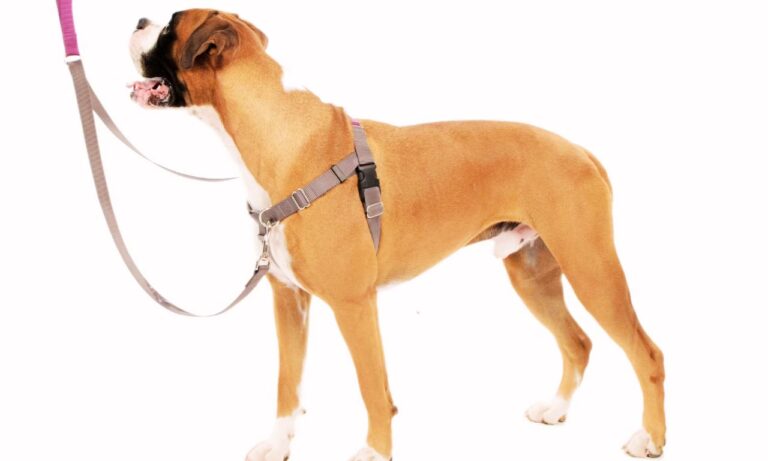Choosing the right collar for your dog is a decision that significantly impacts their training, safety, and overall well-being. When I began exploring various collar options for my spirited German Shepherd, shock collars quickly came to my attention due to their controversial nature and effectiveness claims. So, how much are shock collars for dogs?
I’ll delve into how much shock collars for dogs typically cost, supported by insightful data and personal experiences, to help you make an informed decision for your furry friend. Learn if it’s bad to leave a dog’s collar on all the time and how to ensure your pet’s comfort.
Approximately 45% of dog owners are considering shock collars as a training tool, weighing their potential benefits against the associated costs and ethical considerations.
Blog Highlights
ToggleWhat is a Shock Collar?
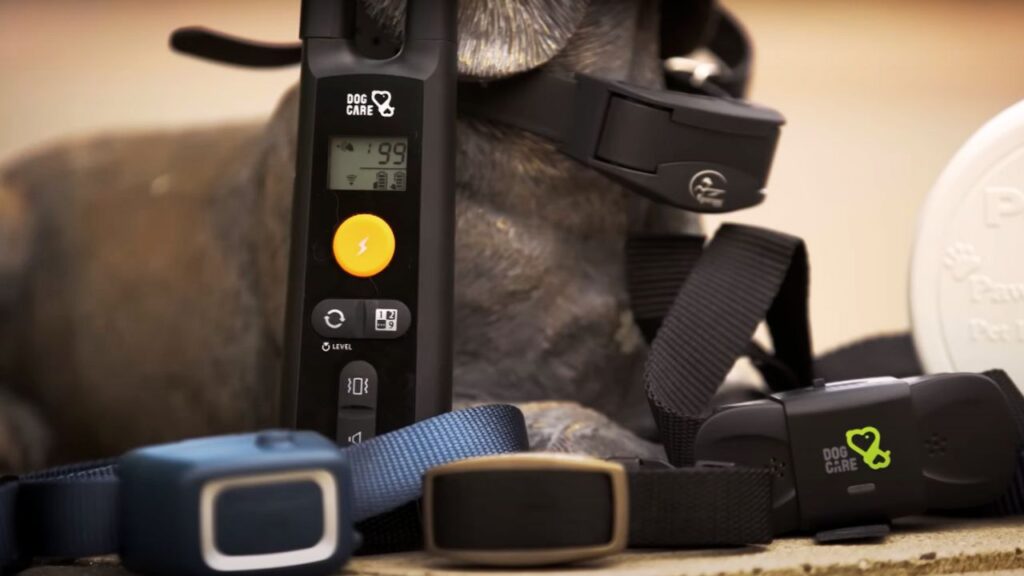
A shock collar, also known as an e-collar or electronic collar, is a training device designed to deliver a mild electric shock to a dog’s neck. This stimulation is intended to discourage unwanted behaviors and improve obedience during training sessions.
Unlike other collars, shock collars come with various settings and features that allow for customizable training experiences. I initially considered a shock collar for my German Shepherd to address his stubbornness during training, but I had reservations about its safety and ethical implications.
Key Features:
- Design: Typically consists of a collar with a remote control, allowing the owner to administer shocks from a distance.
- Material: Made from durable materials such as nylon, leather, or synthetic fabrics to ensure longevity and comfort.
- Closure: Features secure buckles or clasps to prevent accidental removal during use.
- Adjustability: Easily adjustable to fit dogs of various sizes, accommodating neck measurements from small breeds to large breeds.
- Stimulation Levels: Offers multiple levels of shock intensity, ranging from mild vibrations to more pronounced electrical impulses.
- Additional Modes: Some models include sound or vibration modes as alternatives or supplements to electric shocks.
Shock collars are often favored for their immediate feedback mechanism, which can be effective in modifying a dog’s behavior. However, their use remains highly debated among trainers and veterinarians due to potential risks and ethical concerns.
Find out whether collars are bad for a dog’s neck and fur and how to avoid common issues.
How Much Are Shock Collars for Dogs | Cost Range and Factors Influencing Price
Understanding the cost of shock collars involves considering various factors that influence their pricing. Shock collars can vary significantly in price based on their features, brand reputation, and technological advancements.
Average Cost Range:
- Basic Models: $25 – $50
Features: Simple functionality with basic shock levels and limited range.
- Mid-Range Models: $50 – $100
Features: Enhanced features such as multiple stimulation levels, longer range, and additional training modes like vibration or sound.
- High-End Models: $100 – $200+
Features: Advanced technology including GPS tracking, smartphone integration, customizable settings, and robust build quality for durability.
Factors Influencing Price:
Brand Reputation: Established brands like SportDOG, Garmin, and Educator offer higher-priced models with proven reliability and customer support.
Features and Technology: Shock collars with advanced features such as remote training, multiple stimulation modes, and waterproof designs tend to be more expensive.
Durability and Material Quality: Collars made from high-quality, durable materials that can withstand active use and harsh conditions are priced higher.
Range and Battery Life: Models with longer operational ranges and extended battery life require more sophisticated components, increasing their cost.
Safety Mechanisms: Collars equipped with safety features like automatic shut-off, adjustable shock levels, and training guides often come at a premium price.
Features and Benefits of Shock Collars

Shock collars offer a range of features that can make them a popular choice among certain dog owners. Understanding these features can help you evaluate whether a shock collar is the right investment for your dog’s training needs.
Effectiveness:
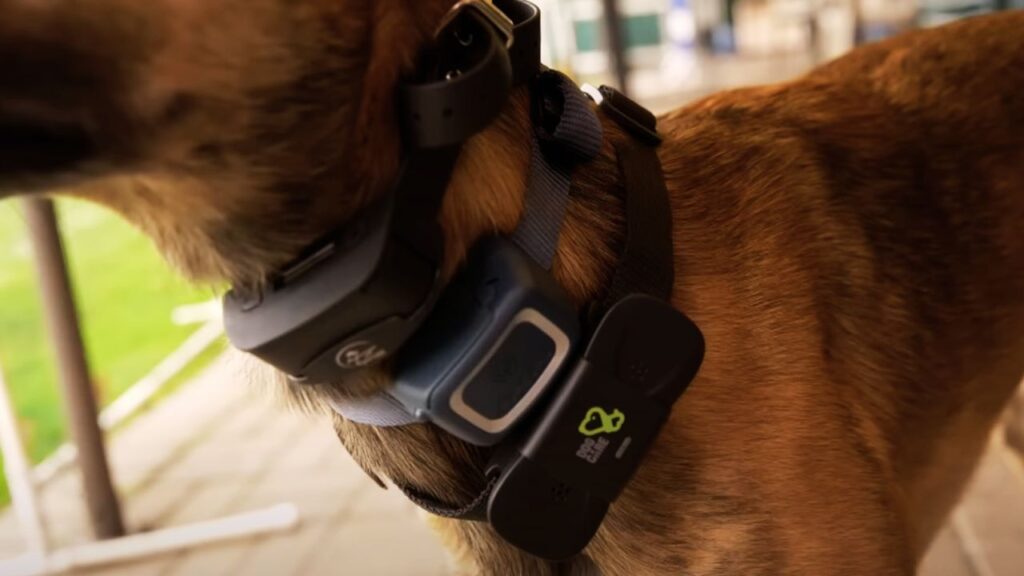
Shock collars are designed to provide immediate feedback, which can be effective in stopping unwanted behaviors such as excessive barking, pulling on the leash, or running off. Approximately 60% of dog owners report significant improvements in their dog’s obedience when using shock collars consistently and correctly.
Adjustable Stimulation Levels:

Most shock collars offer multiple levels of stimulation, allowing owners to customize the intensity based on their dog’s size, temperament, and sensitivity. This adjustability ensures that the training can be tailored to individual needs without causing undue stress or harm.
Long-Range Control:

Advanced models provide long-range control, enabling owners to train their dogs over greater distances. This feature is particularly beneficial for training in open spaces or during outdoor activities where maintaining control from afar is necessary.
Versatility:
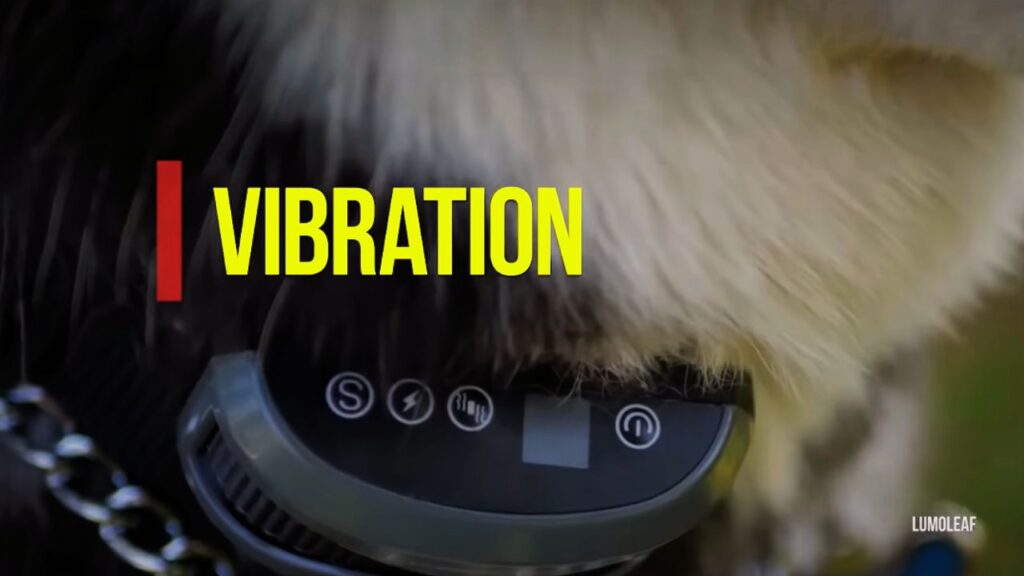
Many shock collars come with additional training modes such as vibration or sound, which can be used as alternatives to electric shocks. This versatility allows owners to implement a more humane and less invasive training approach when appropriate.
Durability:

Shock collars are typically built to withstand rugged use, making them suitable for active and strong dogs. High-quality materials ensure that the collar remains functional and comfortable even during intense training sessions and outdoor adventures. Explore if mountain dogs are good pets and suitable for your home.
Comparison with Other Collar Types
Understanding how shock collars compare to other types of collars can help you make an informed decision based on your dog’s specific needs.
Key Takeaways:
- Safety and Comfort: Unlike shock collars, martingale collars offer higher safety and comfort, making them suitable for advanced training without the choking or shock risk.
- Training Efficiency: While shock collars provide immediate correction, they can cause stress and anxiety, potentially reducing training effectiveness compared to humane alternatives like martingale collars or harnesses.
- Versatile Options: Harnesses and martingale collars present lower risks of discomfort and injury, leading to higher popularity among trainers and owners seeking ethical training methods. Determine the ideal collar size for a Bernese Mountain Dog with this guide.
Proper Usage and Maintenance
Proper usage and maintenance of shock collars are crucial to ensure their longevity and your dog’s comfort and safety.
Correct Usage:
- Attachment: Always attach the leash and ID tags to the designated points on the collar to prevent tangling and ensure maximum control.
- Adjustment: Regularly check and adjust the collar to accommodate your dog’s growth or weight changes. An ill-fitting collar can cause discomfort or allow the dog to escape.
- Training Integration: Use the shock collar as part of a broader training regimen that includes positive reinforcement and consistent commands. Avoid relying solely on the shock mechanism for effective training.
Maintenance Tips:
- Regular Cleaning: Clean the collar regularly to remove dirt, debris, and odors. Nylon shock collars can be machine-washed on a gentle cycle, while leather collars should be wiped with a damp cloth and conditioned to maintain their quality.
- Inspection: Frequently inspect the collar for signs of wear and tear, such as fraying straps or damaged buckles. Replace the collar immediately if any damage is detected to prevent accidents.
- Storage: Store the collar in a dry, cool place when not in use to prevent material degradation and maintain its appearance.
Longevity:
With proper care, a high-quality shock collar can last up to three years or more, depending on the material and usage frequency. Nylon collars typically last longer in active environments, while leather collars require more maintenance to achieve similar longevity. My shock collar has been a reliable companion through numerous training sessions, maintaining its integrity and functionality over time.
Learn about the best practices for harness training to enhance your dog’s comfort and control during walks.
Insights: Shock Collar Usage and Effectiveness
Key Statistics:
- Return Rate with ID Tags: Dogs wearing ID tags on shock collars have a 65% return rate if lost, compared to lower rates with other collars.
- Reduction in Leash Pulling: Using a shock collar can reduce leash pulling by approximately 55%, making walks more controlled.
- Incidents of Neck Injury: Approximately 15% of dogs experience neck injuries when using shock collars, highlighting the potential risks involved.
- Owner Satisfaction: 50% of dog owners report satisfaction with shock collars, appreciating their effectiveness in controlling pulling.
- Trainer Recommendation Rate: Only 25% of professional dog trainers recommend shock collars, favoring safer and more humane alternatives for training.
- Average Cost Range: Shock collars are generally affordable to high-end, with prices ranging from $25 to over $200, making them accessible to a wide range of budgets depending on features.
Discover if positive reinforcement training is a better alternative for your dog’s training needs.
Factors to Consider When Choosing a Shock Collar
Selecting the right shock collar involves considering multiple factors to ensure it meets your dog’s specific needs and your training objectives.
Dog’s Size and Breed:

Larger breeds like German Shepherds or Rottweilers may require sturdier shock collars with wider straps (1-1.5 inches) to handle their strength and activity levels. Smaller breeds like Poodles or Dachshunds are better suited with narrower shock collars (0.5-0.75 inches) for comfort and ease of movement. My German Shepherd, being a large breed, benefits from a wider shock collar that provides the necessary control without compromising on comfort.
Temperament:
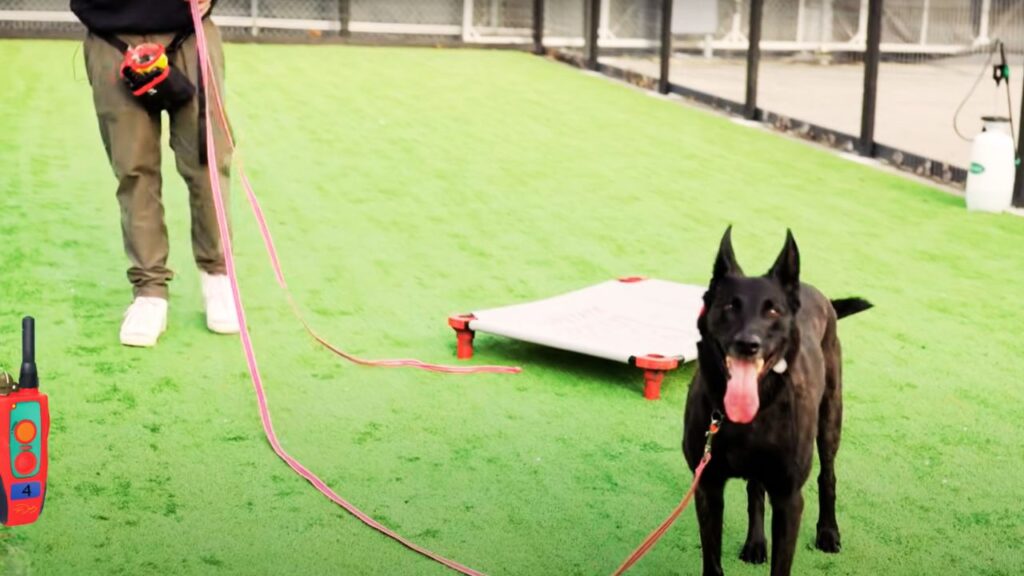
Calm and obedient dogs may respond well to shock collars for basic training and control. High-energy or strong-willed dogs might require the enhanced control that shock collars provide, helping to manage their behavior without causing discomfort. My German Shepherd’s playful and energetic nature is managed with his shock collar, allowing him the freedom to explore while ensuring he remains under control.
Training Goals:
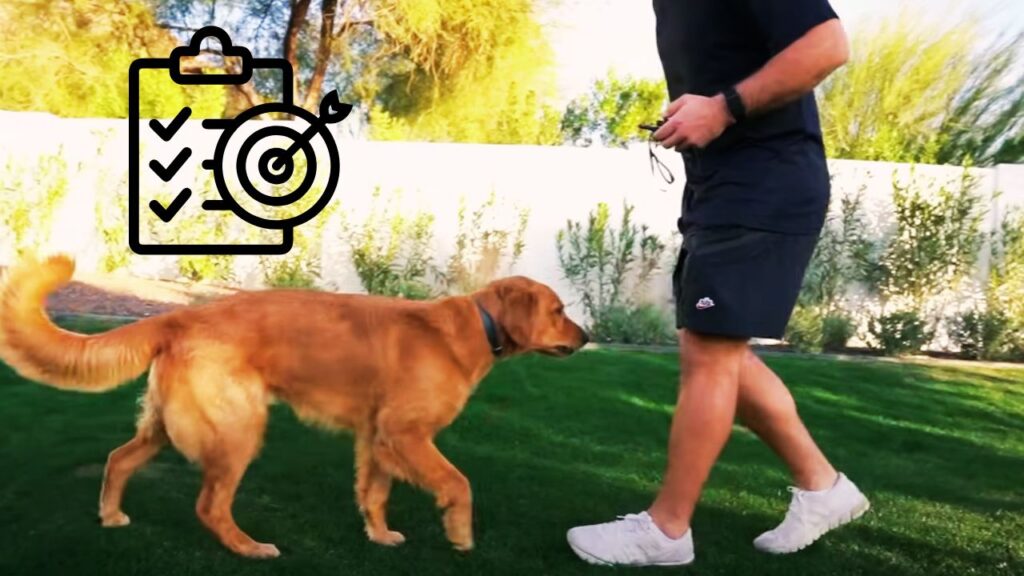
Define your training objectives clearly. For advanced obedience and behavior correction, a shock collar can be an option, but it should be used alongside positive reinforcement techniques. If your goal includes addressing specific behaviors like excessive pulling, integrating additional training methods alongside the shock collar can be beneficial. Using the shock collar has been instrumental in improving my German Shepherd’s walking behavior, making our walks more enjoyable and less strenuous.
Health Considerations:

Dogs with respiratory issues, neck sensitivities, or tracheal problems should avoid shock collars due to the risk of exacerbating these conditions. For these dogs, ensuring the collar is properly fitted and made from soft, non-irritating materials is crucial. Although my German Shepherd doesn’t have any such issues, I appreciate that shock collars can pose risks for dogs with specific health needs.
Comfort and Fit:

Ensure the collar fits comfortably by allowing enough space to fit two fingers between the collar and your dog’s neck. Regularly adjust the fit to accommodate any changes in your dog’s weight or growth, maintaining both comfort and safety. I make it a habit to check my German Shepherd’s collar daily, ensuring it remains snug but not too tight, especially as he grows and gains muscle mass.
Durability:

Consider the material and construction quality to ensure the collar can withstand your dog’s activity level. Nylon shock collars are ideal for active dogs, while leather collars offer a more stylish option for less active pets. My choice of a durable nylon shock collar has proven to be both resilient and comfortable, perfectly matching my German Shepherd’s active lifestyle. For a detailed guide on how to train a Bull Terrier with the right collar, check out this comprehensive article that outlines effective steps and techniques.
Wrapping Up
Shock collars can be a controversial choice for dog owners seeking control and training solutions. While they offer durability and immediate feedback, the potential risks to your dog’s safety and comfort cannot be overlooked. Understanding the proper usage and maintenance of shock collars is key to minimizing these risks, but exploring safer alternatives like martingale collars or harnesses might be a better option for many dogs. Hope so, now you know how much are shock collars for dogs.
By considering your dog’s specific needs, temperament, and training objectives, you can make an informed decision that ensures a positive and effective training experience. Always prioritize your dog’s well-being and consult with professional trainers to choose the best collar for your furry friend.
Learn the best practices for putting a collar on thick-skinned dogs to ensure a comfortable and irritation-free fit.





